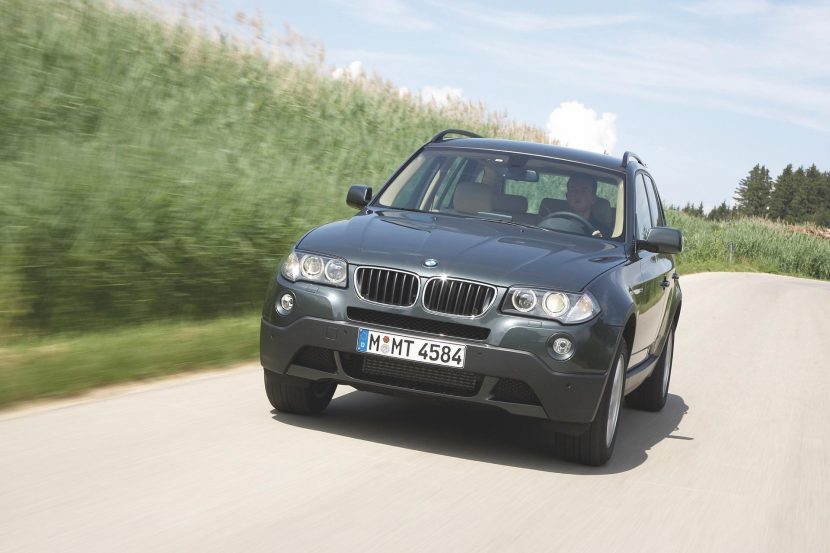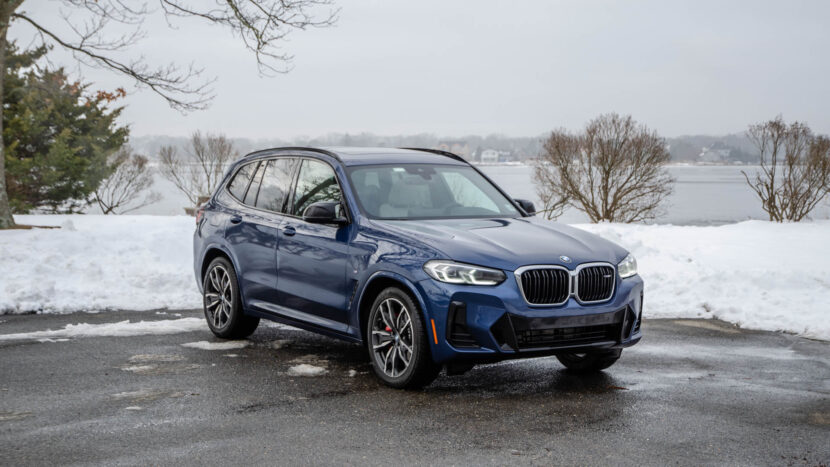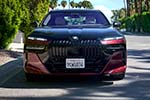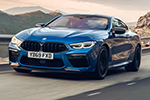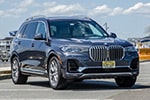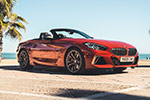In 2003, just three years after introduction of the full-size X5, BMW brought the first-ever BMW X3 to market. Built to compete in the blossoming luxury SUV segment, arguably pioneered by Mercedes and BMW themselves, the X3 wasn’t an immediate hit. But in time, the BMW X3 has become a cornerstone of the brand. In fact, the X3 represents a huge percentage of the total per-year sales the Bavarian automaker enjoys.
For example, in 2024, the X3 alone accounted for almost 20% of the brand’s total US sales. But buying new is expensive, and some older X3s exude a particular charm the new stuff just doesn’t have. And, new cars have never been pricier. Time to figure out whether that “gently-used” X3 sitting at the dealership you drive past every morning is the bargain of the century or years of expensive headaches.
First Generation BMW X3 (E83)
Like the X5 that came before it, the first-gen X3’s biggest draw is arguably its available manual transmission. Due to the SUV’s size and weight, it’s still perhaps not the most exhilarating vehicle to ever wear a roundel, but it’s a neat novelty and slightly easier to maintain. The E83 X3 was only ever offered in the US with a six-cylinder engine; early models enjoyed the legendary M54 inline-six displacing 2.5 liters while later models got the arguably underrated 3.0-liter N52 inline-six. No turbos here, either, which certainly helps keep repair costs lower.
The M54 inline-six is overall pretty resistant to big ticket maintenance woes. There are some standout items that almost always need addressing at some point, including the DISA valve and oil filter housing gasket. The coolant system in its entirety is another weak point. The later N52 models are equally resilient, and there’s little else to talk about here, thankfully. Both engines use VANOS and looking for recent VANOS work via old service records or talking to the seller is a good indicator that the vehicle was well-kept.
The first-gen X3’s engines are pretty stout. However, there are other issues that crop up from time to time. Sunroof rattles and leaks are something to be conscious of, and window regulators can fail out of the blue, which is basically a tradition when talking about BMW models from this time period. All first-gen X3s are all-wheel drive, too, which adds complexity. The manual is a fun novelty. Otherwise, there are more reliable X3 choices.
Second Generation BMW X3 (F25)
BMW introduced the next iteration of the X3, the F25 chassis, in 2010. Gone is the manual transmission, but there are considerably more options to choose from otherwise. After 2012 a diesel powertrain was introduced, and it’s the first X3 to get a taste of turbocharged goodness in the N55 engine. Finally, rear-drive models (dubbed sDrive rather than xDrive models) were also made available. Let’s not overcomplicate things: the most reliable F25 is an N52-powered model.
The familiar engine is more reliable than the other gas options, though only available in 2011 and 2012 models. The powerful but sometimes maintenance hungry N55 demands charge pipe and fuel pump attention that the N52 simply doesn’t require. The N20 turbo four isn’t too bad to maintain overall. Importantly, there was a timing chain recall that makes pre-2015 examples fairly cheap to buy upfront but a bit of a gamble if the recall hasn’t been performed. 2015 saw changes to the N20 that made the recall unnecessary.
That leaves us with the diesel engine options available in the US. As the F25 X3 is in fact the only generation that saw a diesel come to the US, finding one might prove challenging. The xDrive28d boasts a neat 280 pound-feet of torque. Like the N20, timing chain woes plague the diesel motors. Get that addressed, and you still have regular BMW diesel problems to face down. Exhaust gas recirculation (EGR) valves and swirl flaps can lead to annoying and expensive fixes, and while there are “extra-legal” alternatives, that could lead to headaches for emissions compliance.
Powertrains aside, the F25 BMW X3 has few common problems. Seeking out a post-LCI model (2015+) is advisable as the N20’s timing chain problems are resolved and 2014+ models get the newest iDrive versions available on the platform. Glove box delamination and sunroof shade rattles seem to crop up from time to time, but that’s certainly nothing to discourage you from taking home the otherwise perfect F25. However, we do think there is at least one better option here.
Third Generation BMW X3 (G01)
The third generation of the BMW X3 (G01) adds a high-powered X3 M variant that is one of our favorite BMW vehicles of all time. The discontinued future classic SUV relies on the excellent S58 engine found under the hood of contemporary M2, M3, and M4 vehicles. Reliability there has been excellent so far, and 503 horsepower is a nice side benefit. If you can afford it, a F97 X3 M is hardly the most expensive long-term way to enjoy an X3. The biggest “gotcha” with a used X3 M is simply the expense of parts. Brace for the regular M tax, which translates roughly to a 30-50% pricier part than a regular, non-M component.
Good news elsewhere in the lineup, too. The G01 X3 offers four- and six-cylinder engines, and both are new for the chassis. The B48 four-cylinder is as stalwart here as it is elsewhere in the BMW catalog. That is to say, overall unproblematic. Keep an eye out for coolant and oil leaks, and a charge pipe replacement isn’t a bad idea, but you’re otherwise okay. The B58 inline-six in the X3 M40i has been discussed ad-nauseum, but it’s a joy, too. Other than the occasional gasket and routine maintenance, the B58 is a nearly zero-risk dive into X3 ownership. The X3 M40i looks excellent, too, the perfect mix of old-school and new-school BMW design.
There was briefly a hybrid X3 sold in the US — the X3 xDrive30e. It paired the B48 four-cylinder with an electric motor and provided decent range and power. While the B48 is usually a safe bet, be prepared for potentially expensive battery replacements as the components age. But we expect regular running costs to be otherwise in line with regular BMW costs.
Fourth Generation BMW X3 (G45)
The fourth generation of the BMW X3, the G45, debuted just a few months ago in 2024. In fact, we took a spin in it a few months prior to writing this breakdown. Generally, it’s a safe bet that the newest models are more reliable than the outgoing ones. Especially considering the powertrains under the hood are nothing new.
The B48 four-pot and B58 inline-six are delightful to drive and well-researched enough at this point to provide peace of mind. That said: we’re interested to see where the material and design choices BMW made with the latest X3 land the vehicle after a decade of repeated heavy use. Some of the materials are simply not as nice feeling as the G01’s; and many of the plastics feel considerably cheaper. Time will tell; that said, we’re reasonably certain that at least from a drivetrain perspective, the G45 will be quite a reliable ride.
Which BMW X3 Generation is the Most Reliable?
We’re going with the G01 every time. The third generation X3 offers the best powertrain options, unless you’re a diesel die-hard. Of particular note is the X3 M, badging you won’t find on the back of any other generation. Although the G45 X3 may prove reliable in the long-run, we don’t have enough time with the chassis to say. More than anything, though, we recommend being thorough when shopping. A good pre-purchase inspection or service history verification will go a lot further than simply relying on general guidelines. Happy shopping.



